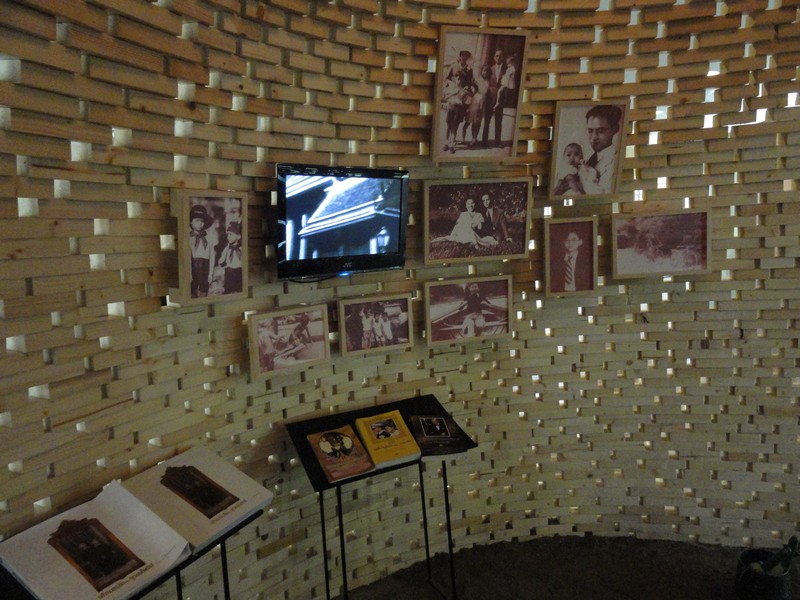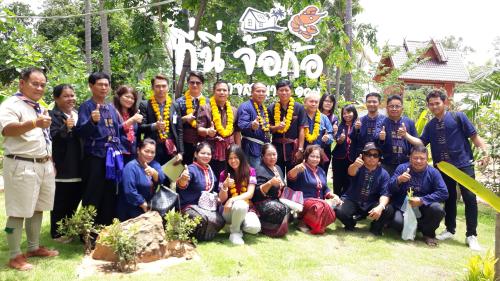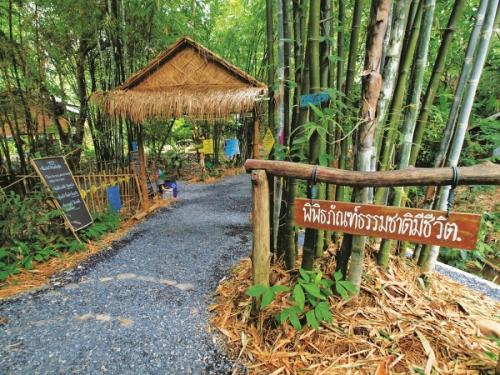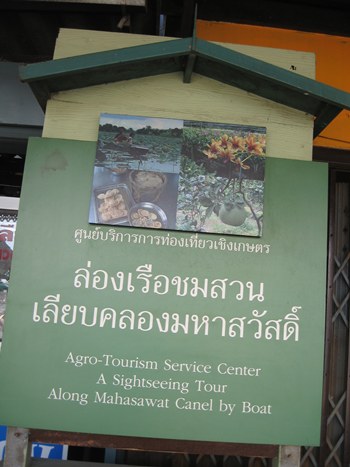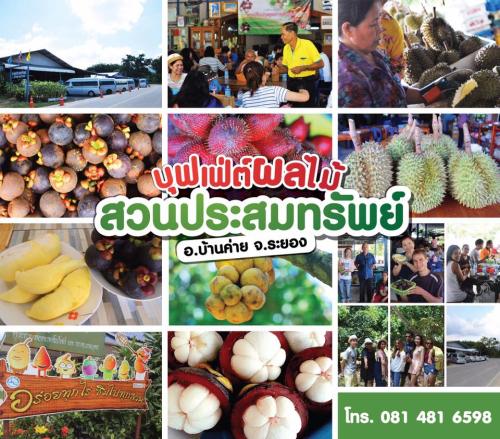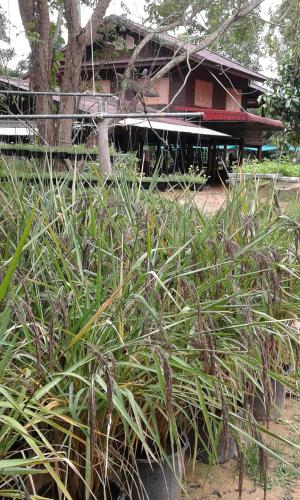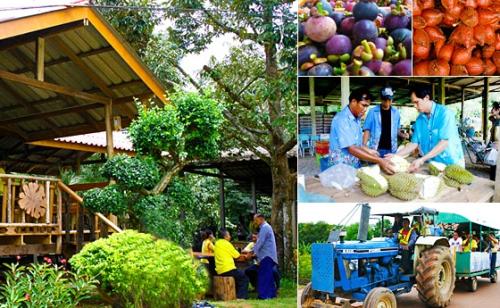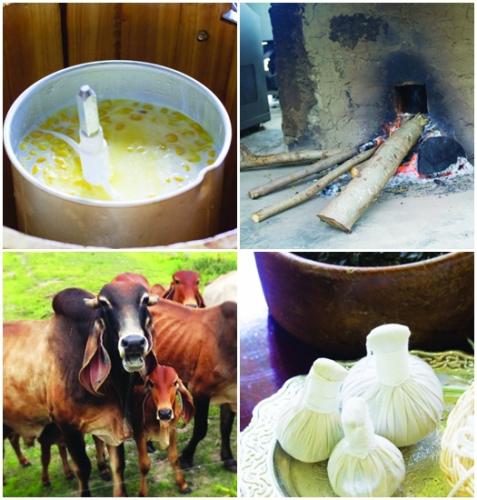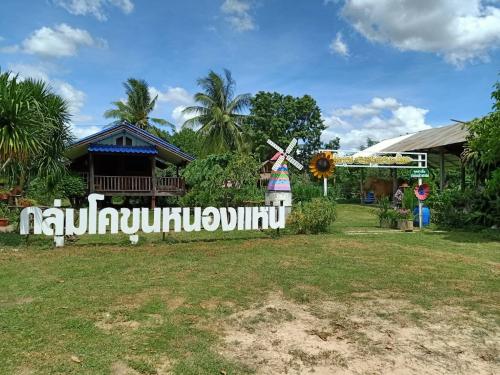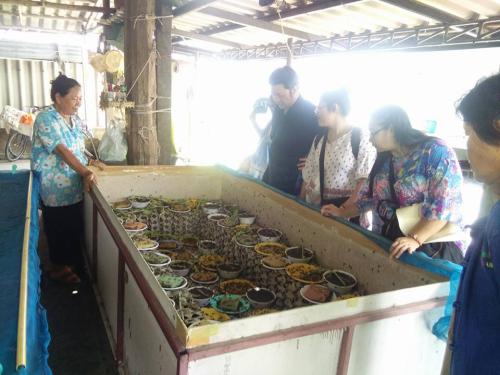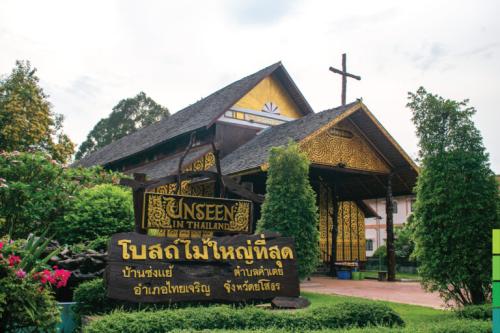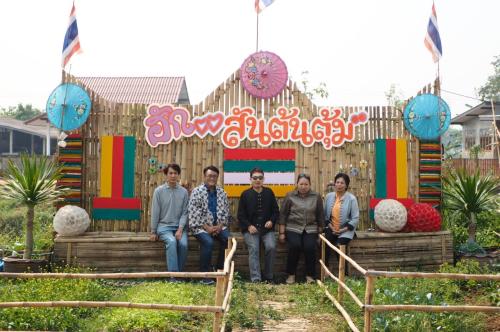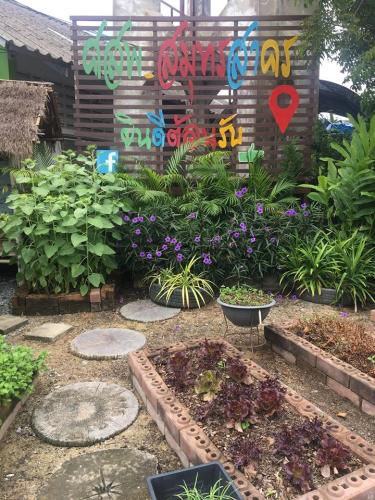Weather
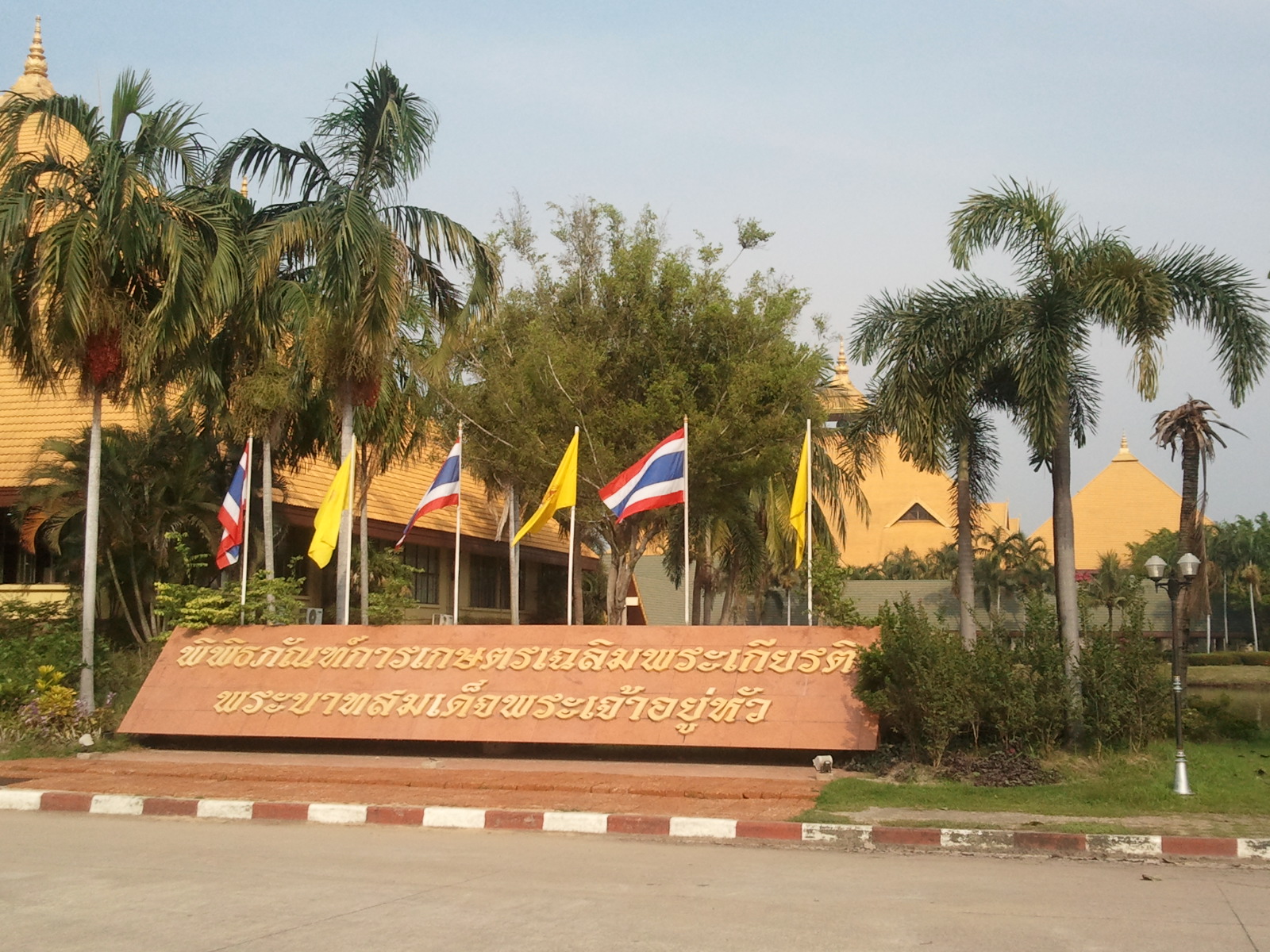
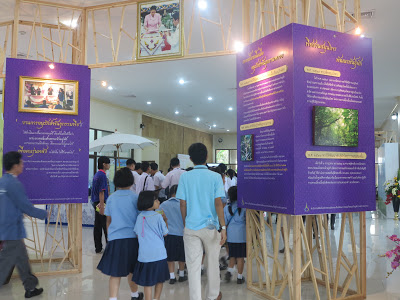
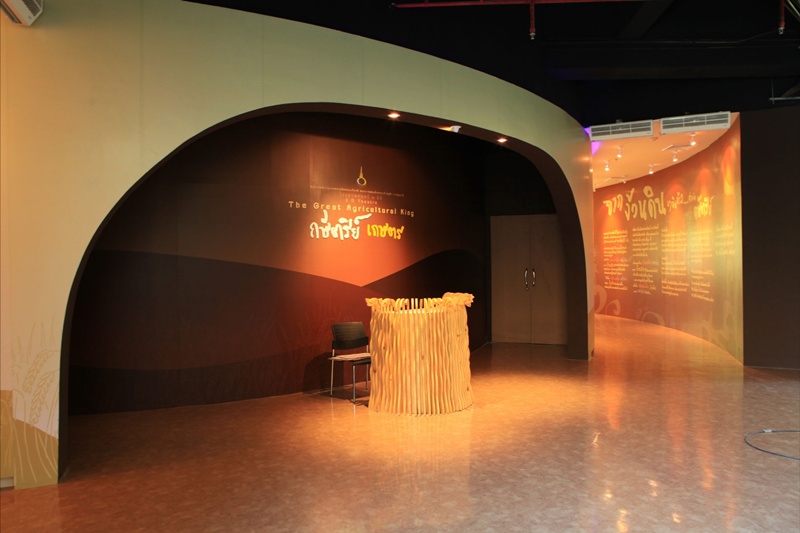
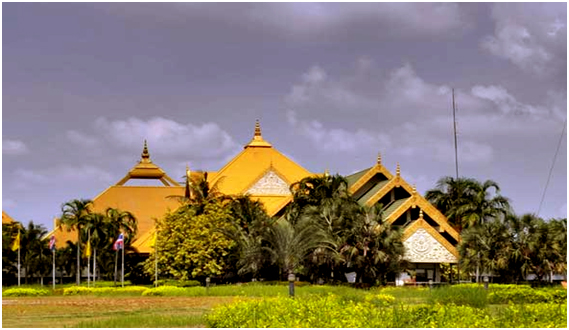
Open
Business hours
• Sunday
: 09:00 - 16:00
• Monday
: 09:00 - 16:00
• Tuesday
: 09:00 - 16:00
• Wednesday
: 09:00 - 16:00
• Thursday
: 09:00 - 16:00
• Friday
: 09:00 - 16:00
• Saturday
: 09:00 - 16:00
Note
: -
Map
Review Score
0
Information
The Ministry of Agriculture and Cooperatives established the Golden Jubilee Museum of Agriculture on the occasion of His Majesty King Bhumibol Adulyadej's 50-year to the throne in 1996. On the area of 800,000 square meters in Klong Nueng Subdistrict, Klong Luang District, Pathumthani Province.
Source
Thailand Tourism Directory
Recommended
Entrance fees
• Entrance fees: Non-fee
• Remark : -
Review (0)
Write Review
0
จาก 5.0
Availability
Value
Service
Relate Agritourism
It is a shrimp pond of the Cho Ko village. Tourists can visit to see how to catch shrimp and can eat freshly from the pond.
Roi Et
There are no charges for visiting Bhumirak Dhamachart Centerm except if you come in groups and need to participate in the activities that the Center has arranged. Here is an excellent learning source, which provides you understanding of the meaning of the word “sufficient” and how to use resources to gain the most benefits and appreciate its value. The walk around this place is in a circle, starting from the Northern Zone to be excited with the planting of various types of bamboo in both ways as well as the prettiness of the bamboo bridge, the bamboo house near the lotus pond, and the bamboo toys. It is exhibited in this way so that we will know about the many benefits of bamboo, including the making of the water dripping trough for watering the trees and soil to replace people; walking up the small mountains to learn about the wild mountain; hydraulic ram pump is to use water to compress the water to the highland instead of using the water pump, wet fire break system, benefits of vetiver grass, and how to build the check dam. Then, walking though the Central Zone to learn about New Theory Agriculture for the farmers to gain benefits from their own land to its value; learning how to build the soiled house and many types of herbs. After that, walking though the Northeastern Zone to visit the rice bank; learning about the rice milling and how to raise the livestock, in which huge cows can be seen in the stalls; how to make compost for own use so that there is no need to buy chemical fertilizer, and learn about Hom Din, which is how to bring back to good soil for farming by covering the land. But how to do that? It is better to learning by yourself. Lastly, going into the Southern Zone to look at how to burn charcoal from bamboo; how to make Biodiesel, and learn about Kaem Ling Project. Moreover, throughout the Center, I have seen many big and small watercourses along the way. There are pools, agricultural beds to grow crops, Chai Phatthana Hydraulic Turbine, the growing of vetiver in water, and many other things. This is the end of the walk where we have received knowledge and enjoy an untiring walk. Walking around, looking, listening, and asking the officer relentlessly just because things that we think ‘we know’ become things we never knew before. This is because we are used to all these projects or theories but we have never practiced or actually touched.
How to travel: From Rangsit intersection, take the direction of Ong Kharak District. Head to use the route of Nakhon Nayok-Nang Rong Waterfall. Pass through Wang Takrai. Before reaching Nang Rong Waterfall for about 2 kilometers, turn right into Khun Dan Prakan Chon Dam Project. Go straight for about 3 kilometers until reaching the traffic circle (with the elephant statues). Go to the right to cross the bridge. When reaching the four-way intersection, turn right and go straight for 200 meters. The Center is on the left-hand side.
Nakhon Nayok
It is agricultural tourism connected to Ban Sala Din
Nakhon Pathom
There is various fruit trees plant on this farm such as Mangosteen, Longkong, durian, Rambutan, Santol, and Mayongchid. It is like a normal orchard but the difference is that "Suan Prasomsap" uses natural extracts. and use bio-fertilizer in pest control to grow fruit trees ensuring that quality products will be safe from toxins and chemicals. That's fruits from this orchard have a sweeter and tastier flavor.
Rayong
Sufficiency Economy Philosophy House is a learning center of the new agriculture theory. Inside the integrated garden, is planting vegetables for household consumption adhering to the sufficiency economy philosophy of King Rama IX. It is also the pilot model of growing rice berry in the 400 plastic tanks that results in the 20 tanks of paddy, which is sufficient for consumption all year round. Later, numbers of villagers and foreigners visit this place. The lecturer is available to provide knowledge about the SEP to the students and interested people.
Chumphon
It is a beautiful, shady fruit garden. The uniqueness of the taste of fruit, whether it is durian, rambutan, mangosteen and longkong, is why the owner of the garden has emphasized that this place has quality fruits. Its quality is at the GAP level by adopting a good quality farming system into production. The GAP system itself helps to increase the quality of productivity and safe for consumers, including the farmers themselves. Because the GAP system controls the use of chemicals to a level that is safe for consumers. Therefore, consumers or tourists can rest assured that they are safe and secure.
Rayong
Rai Khun Mon is a mixed agricultural plantation, organic vegetable garden and a factory to process various products such as corn milk, vegetable juice, banana/jackfruit dried. Krayasart coated with vegetable juice, corn Meatballs, corn milk ice cream, healthy homeopathic food and a learning center for Thai wisdom on an area of 150 rai with modern machinery
Tourism program
Learn activities based on various bases.
1. Corn milk production base
2. Corn milk ice cream production base
3. The base for collecting fresh corn from the field
4. Sesame oil extraction base
5. Wood vinegar extraction base and Iwate charcoal furnace
6. The base for making a compress
7. Earth house
Other attractions along the route (with distance/km)
River Kwai Bridg, Kanchanaburi War Cemetery, a distance of 25 kilometers
Wat Tham Suea (Tiger Cave Temple), a distance of 30 kilometers
Giant Raintree, a distance of 30 kilometers
Community enterprise products
Corn milk, sesame oil
Vacuum baked bananas
Kanchanaburi
Kho Khun Nong Haen Group is a new agricultural attraction for livestock in Yasothon province; by opening a farm to welcome tourists to experience the lifestyle of a community of successful fattening cattle herders at the national level.
Show the knowledge of cattle that are raised like a beloved pet as well as providing knowledge on the integration of groups and raising fattening cattle to generate income. Tourists can go for a day trip or stay overnight in the form of a homestay. In addition, there are beef cattle for sale to tourists who are interested in cooking at home at an affordable price.
Yasothon
Ban Suan Khwan, Lopburi in Maha Son Subdistrict Ban Mi District Learn about the way of life of Ban Maha Son community. Community adjacent to the Bang Kham River Basin It is a source of abundant water, beautiful scenery, calm, suitable for relaxation. and in the past it was known as the rice pit This is a lowland area suitable for rice cultivation, therefore, the rice cultivated in this area is of good quality. It also has a long history of more than a thousand years in the era of Travadee Ton Khamnoen Daughter of Lavo City. Queen Chamadevi and learn about self-reliance leading the King's Philosophy There are also local food and fresh agricultural products that are safe without any chemicals for tourists to taste and buy. Experience the wisdom and community way of tourism by riding an E-Tan car and doing self-reliance activities at the farm. Bamboo Rafting in the evening to experience the lifestyle of people in the basin river at Bang Kham
Tourism Program
- Ban Suan Khwan: Learn about self-reliance with the King's Philisophy, Red Lobster Cultivation, Rice Mill Museum, Charcoal stove Pizza Making, Hand Soak, Foot Soak with Herbs from the community's knowledge, Thai dessert making, rafting.
- E-Ten. riding, see the way of life of the community, learn how to weave wicker baskets, make pork crisp, cricket feeding, and make water hyacinths products, visit ancient Thai houses, see the way of Thai farmers, farming, harvesting rice
Direction that links to other attractions (with distance/km)
- Wanlapa Farm, Khao Phra Ngam Subdistrict, Mueang District, Lopburi, a distance of 35 kilometers.
- Ban Din Mod Daeng, Khok Tum Subdistrict, Mueang District, Lopburi, distance 65 kilometers.
- Ethnic Group, Ban Sai Subdistrict, Ban Mi District, Lopburi, distance 15 kilometers.
- Thai dessert products, Thong Aen Subdistrict, In Buri District, Sing Buri Province, a distance of 25 kilometers.
Community Enterprise Products in the Community
- Salted egg, puffed pencil + pandan leaves, pork crisps, red chili paste, chili paste, official produce Seasonal agriculture, wicker basket, OTOP products
Lop Buri
Ban Song Yae Christian Church is located in Thai Charoen district, Yasothon. There is a history in 1908 that there were 5 families who fled from different places to live in this area, they fled for the same reason, which was accused being ghouls and they were therefore attacked and drove away.
It is the 4th church, planned for construction in 1936. Villagers gathered wood and built it in 1947. The shape of the church was built in Thai art style, width 16 meters, length 57 meters. It is the largest in Thailand, using 80,000 wooden planks as roofing boards, using 360 columns of different sizes, mostly wooden poles. The pillars in the middle row are the largest and longest with 260 trees, more than 10 meters high from the ground. The floor planks are of red wood and large Takhian wood. The wooden bench can hold over a thousand people.
The church bell has a diameter of almost 2 feet in a tall bell tower built in the style of a bell tower in typical Thai temples. But strange that it is separate from the church and because the wood that has been gathered is a lot Therefore, the remaining wood was used to build Ban Song Yae Pittaya School.
Yasothon
A village that grow organic vegetables. Visitors can come and learn how to compost from garbage, making compost from oyster snails, and cultivation of organic vegetables from the royal family of Chakphan Pensiri.
Able to visit every day.
Tel 08199896279
Phayao
It is organized as a learning point station in a systematic way such as
1.1. Orchid seed service station and an orchid seed room
1.2. Planting station for various orchid species and increasing the value of orchids
1.3. Ornamental plant planting and propagation station
1.4. Biological production (Trichoderma Beauveria BT), composting does not return to the pile of Mae Jo formula.
1.5. Earthworm, cricket and sloping station
1.6. Hydroponics and Sky Vegetable Planting Station
1.7. Various types of mushroom cultivation stations
1.8. Plant seedling cultivation station and food processing from mushrooms
1.9. Different types of fruit plant propagation stations
1.10. Integrated Agricultural Station according to the Sufficiency Economy Philosophy
(can be adjusted as appropriate)
Samut Sakhon

